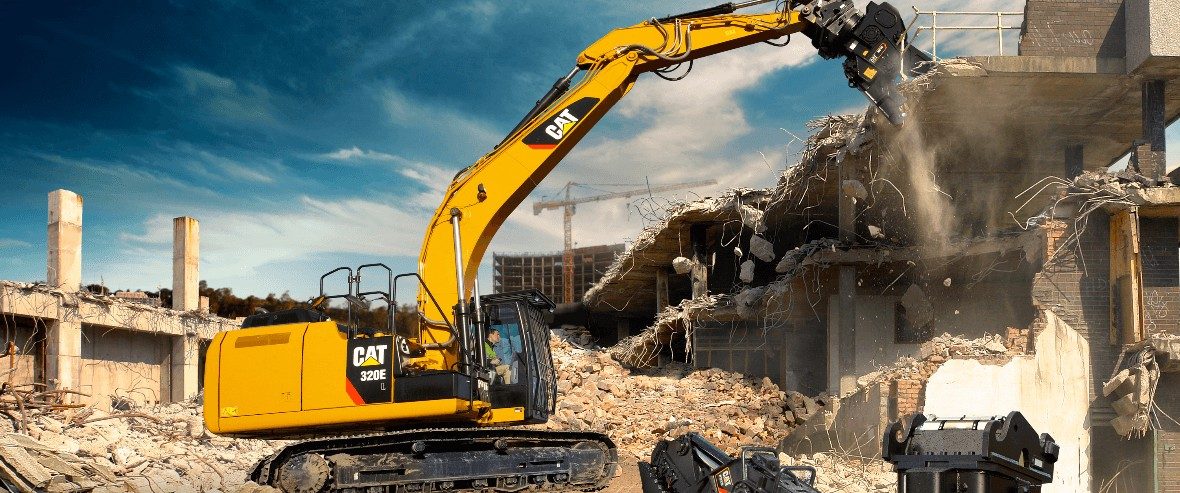
How Buildings Are Demolished
With limited space for buildings, professionals must sometimes tear down old structures to make room for new ones. The demolition process may seem chaotic, but it requires extensive planning to ensure safety and limit the mess created. To do this, operators need to know the proper machines to use and the physics involved in demolishing that specific type of building.
The Demolition Process
Demolition takes careful planning, precise execution and proper cleanup methods. Here's an overview of the major steps involved in demolishing a building.
Pre-Demolition
The demolition process begins long before the building starts to fall. One of the main ways construction teams can make demolition easier is by using proper planning and safety measures. Pre-demolition begins with a building survey where teams look at the building materials, traffic conditions and neighboring communities. These factors help them choose the best method for tearing down the structure.
Before starting the full-scale demolition, workers remove dangerous materials like asbestos and petroleum contamination. This step keeps these materials from being released into the air and causing health and fire hazards.
Along with removing dangerous materials, experts will create a demolition plan outlining all the required techniques and equipment. This plan includes safety measures for workers and the surrounding areas, like blocking off sections of the street.
During Demolition
After working through the steps of pre-demolition, the demolishing process begins. Some of the most common methods include:
- Implosion: This method is rare but has several advantages, including cost-effectiveness. The process involves setting explosives inside the building to cause it to fall to the side or collapse in on itself.
- Deconstruction: Most commonly, demolition teams use deconstruction. This process involves removing large sections of the building with an excavator and breaking them into smaller pieces.
- Selective demolition: Businesses that want to lessen their environmental impact may use this strategy. It involves removing specific pieces of a building while keeping the main structure intact.
After Demolition
A significant demolition project leaves a lot of debris behind. The final step in demolition involves removing these materials from the job site to create room for the new building. Construction workers often use heavy machinery with buckets to carry debris, place it in a dumpster or dump truck, and take it to a landfill. Sometimes, workers must sort the materials so select components — like scrap metal — can be recycled in future building projects.
After removing scrap, workers can pass over the site and smooth the dirt to leave a better surface for future construction.
What Machines Are Used?
Demolition projects use various types of heavy machinery like the following to break apart buildings and move the pieces:
- Excavators: These machines work well for digging and moving materials. Add attachments like thumbs and grapples to grip building pieces and move them.
- Backhoes: With a front and rear bucket, backhoes work well for hauling away scraps and digging through the earth to find loose materials. These machines are capable of traversing the uneven terrain around demolition sites.
- Dozers: Bulldozers have the power to tear through everything in their path with an angled front blade. The blade can move metal, concrete or wood and leave smooth ground behind.
- Compact track loaders: Compact loaders are excellent for maneuvering in constrained work zones while carrying debris. The small size and tracks allow you to operate on many types of challenging terrain.
- Articulated trucks: Haul away the discarded materials like support beams, rocks or plumbing pipes with these trucks. Their articulated design allows users to move around busy areas with ease.
Beyond heavy machinery, you can add attachments to expand your abilities. Tools like hammers and shears allow you to break up large chunks of a downed building, while grapples let you move loose material and sort demolition scraps into categories for cleanup.
Benefits of Professional Demolition
When professional teams follow a set process and use the right tools, they can do the work safely and efficiently. Here are the top benefits of hiring a professional or getting proper demolition training before taking on one of these projects:
- Professionals know all the safety protocols for protecting workers and people near the demolition site.
- The work gets done more efficiently when demolition teams know the best methods and equipment.
- Waste materials get reused or recycled wherever possible to reduce the amount thrown away.
- Buildings undergo thorough inspections before and after demolition to ensure safety during the process and after the new rebuild.
Rent Demolition Equipment
As you plan a demolition project, turn to The Cat® Rental Store for an extensive collection of high-quality tools. Our dealers have heavy machinery like backhoes and excavators for rent, plus a diverse range of attachments to add to your capabilities. Browse our online rental equipment collection and get a quick quote to estimate your rental costs. If you need help choosing the right machine, reach out to your nearest Cat dealer.
